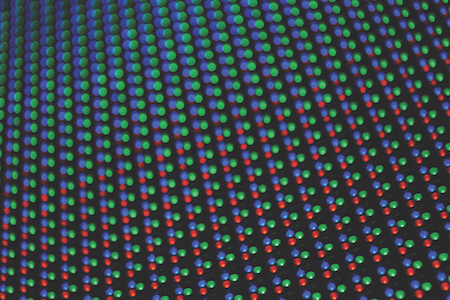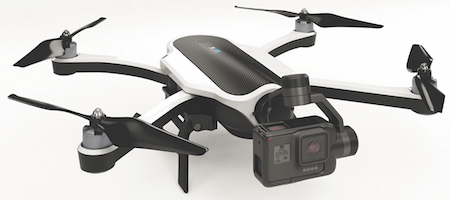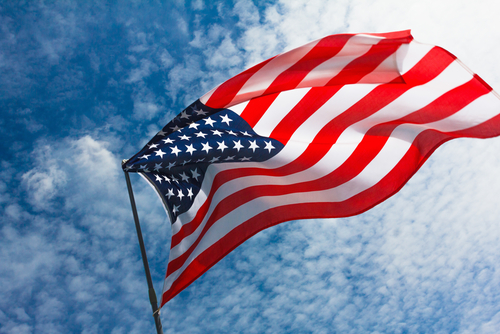By Gonenc Guurkaynak, Ilay Yilmaz, Turker Doygun, and Ekin Ince of ELIG law firm, Istanbul.
Artificial intelligence is real. Oxford Dictionary defines AI as computer systems able to perform tasks normally requiring human intelligence1. That is simply why we see artificial intelligence emerge in every area and subject that was considered to be exclusive to human intelligence. One of these subjects was art or in a more general sense; creation of original things, be it concrete or abstract. This frontier is currently being attacked fiercely by the machines which apparently act autonomously. They are claimed or rather known to be creating works of art. However, although they mimic the human intelligence, they lack the corporal existence of one and are currently not regarded as entities that may have rights in the conventional sense. That leaves the question of ownership and/or authorship regarding works created by autonomous machines unanswered.
The systems that are considered to have artificial intelligence can themselves be owned by real persons or legal entities. However, there is a possibility that the establishment of ownership over such systems may be open for debate in the future in regards to robot rights2. That said it is a more or less established practice around the globe to treat such a system, be it a robot, an android, a smart home computer or a line of code, as a property. We will try to tackle the problem of ownership in regards to a thing that is created by a system, which is itself owned by someone else, on its own.
It may be the case that artificial intelligence examples are initially created for specific purposes by their developers rather than to act as artists creating things on their own. They are generally designed and educated with specific targets and/or practical problems in mind that appear to be impossible to reach and/or solve by way of conventional computing technics. In short, they were intended as more clever tools for mankind, but tools nonetheless. However, these systems proved to be more and more capable than they were initially hoped for and started to provide creations that embody the qualities of a work from an intellectual property law perspective except its creator, namely a non-human set of machines, networks or lines of codes. Google's DeepDream3 and Magenta4, IBM's Watson and Sony's FlowMachines5 created enough proof for the ability of AI in that aspect.
One may ask why AI is different than conventional software or computer systems. It is clear that a work created through such software or system belongs to whoever utilized that software or system lawfully. That utilization by and control of a human during the work's creation process denominates the relevant software or system as a tool that defers to the relevant human for its process. However, in the case of AI, it refers to itself during the creation process and acts more as an independent source of intelligence than as a simple tool. Most importantly, the process of creation does not require the management or even the involvement of human intelligence. Thus, the developer of AI may not be deemed owner of the work created by the AI on its own.
By the general rule across different jurisdictions, the authority to exercise rights arising from the work belongs exclusively to the author, who is inevitably a human6. The difficulty posed by the lack of a human directly responsible for the work created by AI is the determination of the author of such work and thus, the allocation of the rights surrounding it.
All or Nothing?
There are different approaches to tackling this difficulty. The first and the least favorable of these approaches is one that argues that work created by AI shall not be copyrighted and thus, shall directly fall into the public domain7.
In Naruto v. Slater8, a case regarding the copyright claims on photographs which were physically taken by a monkey named Naruto who snapped the photos with a photographer’s camera, the U.S. District Court held that since an animal (non-human) does not have legal standing in court, it may not sue or pursue copyright using the law and released the photographs in question into the public domain, denying any claims of authorship by either David Slater, the photographer or Naruto, the monkey.
The main shortfall of this approach is arguably the lack of any incentive on the side of the human developing, funding and/or in any way contributing to the development and improvement of the specific AI or the technologies in that field in general. Depriving those contributing to the work from its benefits is likely to slow down progress and development in general9. Less and less copyrightable work being created might eventually lead to the self-contradictory consequence, which is the decrease of the work falling into the public domain as the copyrighted work eventually falls into the public domain at the expiration of its protection period.
Another approach is to redefine the term “author” within the scope of intellectual property law to encompass non-humans10. First, the rights arising from the authorship cannot be employed by the AI, at least yet. Therefore defenders of this approach also state that rights arising from the authorship should be given to its owner, be it the owner of the relevant software, hardware or a combination of both (or the developer, the author of the first code etc. i.e. an individual recognized by the state as the subject of rights). As a result, attributing the authorship of the work to an AI, which will never employ any of its rights on its own as these rights will simply emanate on its owner (or another individual as explained above) becomes a symbolic gesture. In that respect, one might question the superiority of this approach as it is likely to prove impractical in contrast to other views on the matter. The legislations around the world such as in the United States, the United Kingdom11, the European Union12 and Turkey13 require the author to be a real person or a legal entity. The regulations are essentially based on a definition of author that includes such requirement. Therefore, changing the definition of the term would ultimately require fundamental revisions in various provisions, which are well-established through years of practice and thereby pave the way for further and deeper discussions on the matter.
A Convenient Analogy
Lastly, and most favorably the difficulty of determining authorship in works created by AI may be tackled by way of reinterpretation of the “made for hire” doctrine existing in many jurisdictions across the world, including the ones listed above14. This doctrine and specific provisions in legislations based on this doctrine stipulate that rights in works created by civil servants, employees and workers during the execution of their duties shall be exercised by the persons who employ or appoint them; provided that the contrary may not be deduced from a special contract between such persons or from the nature of the work.
There is a striking similarity between an employer/employee relationship, and the relationship between the AI and the person who develops/owns it. The employee, being an independent, creative figure and creating a work on the direction of his/her employer is similar to the AI which is independent in its creative nature to an extent that is unrivaled by any computer technology before it, creating a work with the contribution of its developer/owner similar to that of an employer who gives directions and tools.
In this line of thought, it is arguable that the authorship of the work created by AI can be attributed to the human in closest proximity to it, be it the developer or the owner in the same manner that the authorship of the employee’s work is attributed to the employer in many jurisdictions including the United States and the United Kingdom. One of the biggest practical advantages of this approach over the other two discussed above is the fact that it can be embraced with the reinterpretation of the doctrine coupled with slight revisions to the legislation, if at all. This approach, unlike the others, does not require a comprehensive upheaval of the existing laws and practice.
One important thing to note is the fact that although in some jurisdictions, such as the United States and the United Kingdom the “made for hire” doctrine is enacted in a way that explicitly attributes the authorship to the employer, in other jurisdictions such as Turkey and the European Union the laws do not go as far, and merely attribute the rights of the work to the employer. In such jurisdictions, minor revisions may be made in the wording of the laws to replace the concept of the attribution of rights with the attribution of the authorship.
That being said, once the third approach is adopted, further specific revisions to protect rights arising from works created by AI might not be required since the existing provisions will also provide protection for AI created works15. The “made for hire” doctrine ensures that the employer’s rights on the work created by the employee are protected on the same level as an individual who creates a work in its own initiative. Accordingly, rights of the work created by the AI may also be protected through the human who is recognized by the law. This is applicable to the jurisdictions which attributes rights, rather than authorship to the employer as they ensure protection of the employer’s rights on the work as well. That is to say, once the authorship of and/or the rights arising from the AI created work is attributed to a real person or a legal entity, they will be able to employ the protection provided to them by the existing regulations in terms of AI created works too.
Immortal Creators
Another issue regarding works created by AI is the legal period of protection in terms of such works. Many countries around the world tend to provide specific periods of time during which the work and the rights arising thereof are legally protected. These time periods are usually determined in reference to the life time of work's author and exceptionally work's first publication or transmission. AI is potentially immortal. In that respect, expanding the scope of author's definition in legislations to include AI would render the legal protection periods determined in reference to author's life meaningless. However, once the authorships of AI created works are attributed to humans, the existing legislations would be applicable as is without any further revision.
In addition to the foregoing, the AI is also capable of using, changing, processing, updating and re-creating the works that it previously created on its own. The ease of this re-work for AI on a work it previously created might result in rapid production of copyrightable works due to the AI's computing capabilities. These new works by the AIs might likely be regarded as derivatives of previous copyrighted works and thus provisions that apply to creation and protection of derivative works might be applied to these.
Who Takes Over the Authorship?
Another contentious aspect of AI created works is whether the authorship of these works should be attributed to the developer of the AI, its original author, or its owner, the real person or legal entity that has the rights pertaining to the relevant AI. It is argued that the overall social benefit of the attribution process should be taken into account when discussing the attribution of authorship16. One opinion is that the works created by AIs should be awarded to their developers regardless of any ownership on the AI itself since the developer is the primary source of creativity in terms of the relevant AI considering that its code is written by that person and that such award would be an incentive for developers to work forward on AI technology.
However, this approach may be criticized since it neglects the amount of resources invested by third parties to the technology due to their interest in its results. Many large companies spend huge amounts of money and dedicate great amounts of work-force into developing, educating and maintaining AI systems. The companies along with the AI developers they financially support are “the most important contributors to the research and development of the AI sector. Without their contribution, AI devices would simply not be available for use by the general public”17. Additionally, the technology is known to better develop and evolve when given enough data and time to analyze and for trial and error. In that respect, it is almost surely these large companies that may carry this technology to its utmost possibilities. In that light, these companies would inevitably demand legal guarantees and protection for their investments and would ultimately stop working on this technology or keep their findings, researches and systems secret fearing loss of potential profit. Therefore, currently it seems that the best option is to provide a way for legal entities to own works created by AIs that they own but to limit the legal protection provided to them in such a way that the scientific development is not hindered.
In light of the foregoing, the ownership problem pertaining to works created by AIs remains as one of the compelling legal issues in regards to AI. There are proposed solutions to the matter. Re-interpretation of the “made for hire” provisions in existing legislations appears to be the most convenient solution for now as it demands the least amount of legislatorial change and yet allows enough flexibility to address ever changing needs created by current developments in today’s world. Nevertheless, considering the various repercussions of even the slightest change to the currently established copyright practice, all solutions present further specific questions to the matter that need addressing. However, it is clear that ignorance, as was the case with respect to AI's creative capabilities when they first came around, is not an option this time.
- https://en.oxforddictionaries.com/definition/artificial_intelligence
- Julia Bossmann, Top 9 ethical issues in artificial intelligence (published on https://www.weforum.org/agenda/2016/10/top-10-ethical-issues-in-artificial-intelligence/ ).
- https://futurism.com/artificial-intelligence-already-better-artist-you/
- https://magenta.tensorflow.org/
- https://theculturetrip.com/north-america/usa/articles/machine-creativity-the-role-of-ai-in-the-arts/
- U.S. Copyright Office § 306; https://www.copyright.gov/comp3/chap300/ch300-copyrightable-authorship.pdf
- Ralph D. Clifford, Intellectual Property in the Era of the Creative Computer Program: Will the True Creator Please Stand Up? (Tulane Law Review, Vo. 71, 1997), https://scholarship.law.umassd.edu/cgi/viewcontent.cgi?referer=https://www.google.com.tr/&httpsredir=1&article=1077&context=fac_pubs
- Naruto v. Slater, 2016 U.S. Dist. (N. D. Cal. Jan. 23, 2016), https://law.justia.com/cases/federal/district-courts/california/candce/3:2015cv04324/291324/45/.
- Kalin Hristov, Artificial Intelligence and The Copyright Dilemma (The Journal of the Franklin Pierce Center of Intellectual Property, Vol. 57, No. 3, 2017), https://law.unh.edu/sites/default/files/media/hristov_formatted.pdf.
- Ryan Abbott, I Think, Therefore I Invent: Creative Computers and the Future of Patent Law (Boston College Law Review Vol. 57, Issue 4), http://lawdigitalcommons.bc.edu/cgi/viewcontent.cgi?article=3522&context=bclr; Colin R. Davies, An Evolutionary Step in Intellectual Property Rights—Artificial Intelligence and Intellectual Property (Computer Law & Security Review Vol. 27, Issue 6).
- Art. 9/1; http://www.legislation.gov.uk/ukpga/1988/48/part/I/chapter/I/crossheading/authorship-and-ownership-of-copyright
- Art. 2/1; http://eur-lex.europa.eu/legal-content/EN/TXT/PDF/?uri=CELEX:32009L0024&from=EN
- Art. 1/B (b); http://www.kazanci.com/kho2/mbb/files/tc5846.htm
- Annemarie Bridy, Coding Creativity: Copyright and the Artificially Intelligent Author (2012 STAN. TECH. L. REV. 5), https://web.law.columbia.edu/sites/default/files/microsites/kernochan/09.materials-Bridy.pdf; Hristov, Ibid.
- Hristov. Bridy.
- Hristov
- Hristov


.jpg)
.jpg)
.jpg)

.jpg)




